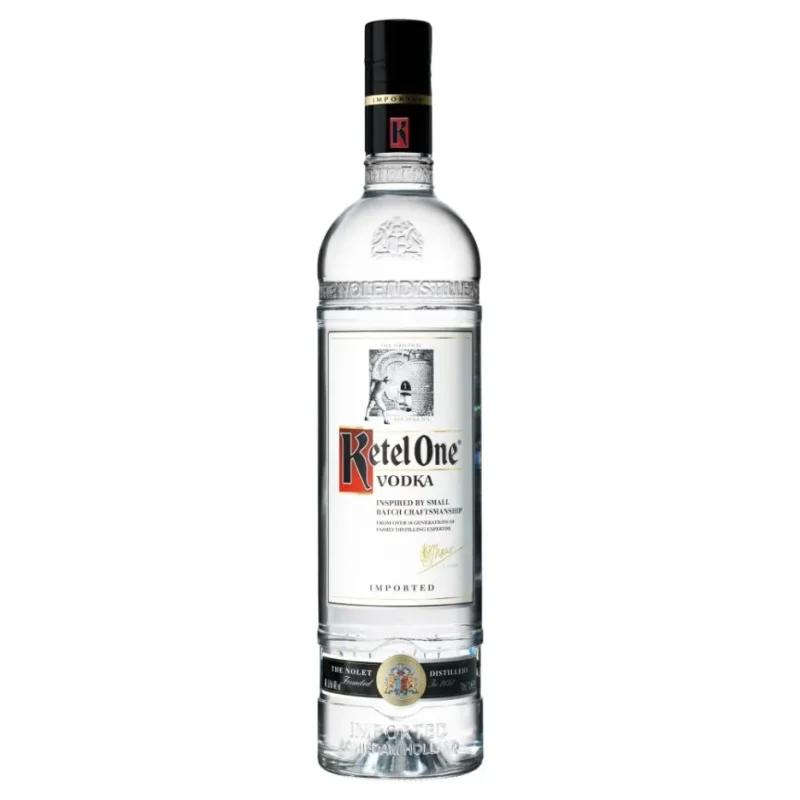For many vodka enthusiasts, there is one question that often comes to mind: Is vodka made from potatoes? The purpose of this article is to answer this question and explore the history, production method, and different types of vodka. Join us as we delve into the world of potato-based vodka, alongside offering insights into other varieties of this popular spirit.
Best Budget Vodkas Ranked
History of Vodka
Vodka, a clear, colorless spirit, originated in Eastern Europe. The name itself is derived from the Slavic word "voda," meaning water - a fitting name for a spirit that has been enjoyed for centuries. Although Russia and Poland both claim to be the birthplace of vodka, it is believed that it was first distilled in Poland during the 8th century and reached Russia in the 9th century.
Ingredients Used in Vodka Production
Vodka can be made from a variety of ingredients, including grains (such as wheat, rye, and corn), fruits, and even sugar. However, the most popular base ingredient for vodka production remains potatoes. In fact, one of the oldest and most traditional methods of producing vodka is through the distillation of fermented potatoes.
Why Potatoes?
Potatoes were (and still are) a crucial crop in Eastern Europe because it is a region where rye, barley, and wheat do not grow easily due to the cold climate. As a result, potatoes became a significant part of the local diet and were subsequently used in vodka production.
How is Potato Vodka Made?
The following steps describe the basic process of making vodka from potatoes:
1. Collection and Preparation of Potatoes: High-quality potatoes are collected, washed, and peeled. They are then cut into small pieces, which increases the surface area, making it easier to extract starch.
2. Conversion of Starch to Sugar: The potato pieces are boiled in water to release starch. Enzymes are added to the mixture to break down the starch into fermentable sugars.
3. Fermentation: Yeast is added to the sugary liquid, called mash, and the mixture is left to ferment in a controlled environment. The yeast feeds on the sugar and produces alcohol.
4. Distillation: The fermented liquid is then distilled to separate the alcohol from other impurities and increase its concentration.
5. Filtration: The distilled vodka is filtered multiple times to remove any impurities, resulting in a clear and smooth spirit.
6. Dilution and Bottling: Pure water is added to the vodka to reduce its alcohol content to a desirable level, usually around 40% ABV, before it is bottled and ready for consumption.
Potato Vodka vs. Grain Vodka
The primary difference between potato and grain vodka lies in the base ingredients used in their production. Potato vodkas are generally considered to have a richer, creamier texture and a more earthy flavor profile compared to their grain counterparts. Grain vodkas are often described as having a lighter, smoother body with a more neutral flavor.
Is Vodka Made From Potatoes Example
Belvedere, Chopin, and Luksusowa are a few popular potato vodka brands that you could consider trying if you're curious about experiencing the taste and texture of this variety. Serve potato vodka in a classic martini, a refreshing Moscow Mule, or simply enjoy it neat to savor its unique taste.
Frequently Asked Questions
What Exactly Is Vodka?
Vodka is a distilled spirit, known for its purity and neutral flavor, made from fermenting and distilling simple sugars from a grain or other starches, including potatoes.
Is It True That Vodka Is Made from Potatoes?
Yes, it's true! While vodka can be made from various materials such as grains, sugarcane, and fruits, the traditional Eastern European method uses potatoes as the base.
Why Are Potatoes Used for Making Vodka?
Potatoes, rich in starches, are excellent for fermentation, the process that creates alcohol. They contribute to a distinct, creamy, and smooth mouthfeel in the vodka, setting it apart from grain-based spirits.
Is Potato Vodka Different from Grain Vodka?
Indeed, it is. Connoisseurs often point out that potato vodka has a richer, fuller texture and a slight earthiness compared to the crisper, lighter quality of grain-based vodka.
How Did Potatoes Become a Base for Vodka?
The practice began in regions like Poland and Sweden, where potatoes were abundant. The surplus allowed distillers to craft vodka from potatoes, offering a unique variant to the typical grain-based spirit.
Does Potato Vodka Taste Like Potatoes?
Not really. While potato vodka carries a subtle earthy undertone, the distillation process is designed to remove most flavors, leaving behind a clean, clear spirit.
How Is Vodka Distilled from Potatoes?
The process involves cleaning, mashing, and cooking potatoes to convert starches into fermentable sugars. After fermentation, the liquid is distilled, sometimes multiple times, to achieve the desired purity.
Are There Any Famous Brands Known for Potato Vodka?
Certainly! Brands like Chopin, Luksusowa, and Karlsson's Gold are renowned for their premium potato vodkas, celebrated by enthusiasts globally.
Is Potato Vodka More Expensive Than Grain Vodka?
Typically, yes. The process of extracting sugars from potatoes is more complex and labor-intensive than using grains, often reflecting a higher price point.
Can People with Gluten Sensitivity Drink Potato Vodka?
Absolutely, potato vodka is naturally gluten-free, making it a preferred choice for those with gluten sensitivities or celiac disease.
How Does Potato Vodka Pair in Cocktails?
Its creamy texture and minimal flavor make potato vodka an excellent mixer, enhancing the drink without overpowering the taste of other ingredients.
Is There a Taste Difference in Cocktails When Using Potato Vodka?
Potato vodka tends to provide a smoother, more rounded mouthfeel to cocktails, subtly transforming the drinking experience compared to grain vodkas.
Can Potato Vodka Be Drunk Straight?
Of course! In fact, vodka enthusiasts often prefer drinking quality potato vodka neat or slightly chilled to appreciate its full-bodied texture and subtle nuances.
What's the Alcohol Content in Potato Vodka?
Potato vodka, like other types, generally has an alcohol content of around 40% alcohol by volume (ABV), but this can vary slightly between brands and distillation processes.
How Should I Store Potato Vodka?
Store potato vodka as you would any spirit: upright, in a cool, dark place. It's resilient to light and temperature changes, but proper storage maintains optimal flavor.
Does Potato Vodka Have a Shelf Life?
No, potato vodka doesn't expire. The high alcohol content acts as a preservative, ensuring that an unopened bottle can last indefinitely.
Is There a Cultural Significance to Potato Vodka?
In countries like Poland and Russia, potato vodka is steeped in tradition, often considered a nod to historical practices and a testament to these regions' resourcefulness and distilling prowess.
What Should I Look for When Buying Potato Vodka?
Focus on reputable brands and check the label to ensure it's 100% potato vodka if seeking a gluten-free option. Reviews and recommendations from fellow vodka enthusiasts can also guide your choice.
Can I Make Potato Vodka at Home?
While possible, distilling vodka at home is illegal in many places and can be quite dangerous if not done correctly. It's best to enjoy professionally produced potato vodka.
Are There Environmental Benefits to Choosing Potato Over Grain Vodka?
Potatoes require less water and often fewer pesticides than grains, which may impact your choice if you're looking for a more environmentally considerate option.
Now that we've answered the question, "Is vodka made from potatoes?" it's clear that there's so much more to learn about this popular spirit. So, whether you're an enthusiast or just beginning your vodka journey, we encourage you to explore other guides and articles on Vodka Doctors to deepen your understanding and appreciation of this versatile spirit. Don't forget to share this article with fellow vodka lovers and start a lively discussion about the wonders of potato-based vodka.
















